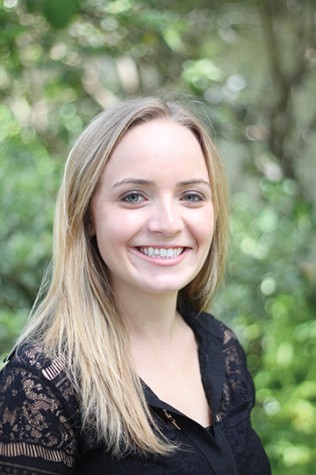
When looking in the mirror, it’s easy to spot the things a person hates about his or herself. Thunder thighs, love handles and “cankles” galore can obscure one’s vision. We all know we should see it as more to love, but in reality it’s just more to judge. It can be even more difficult to pick out one thing you actually like about yourself. I know I probably couldn’t and many people feel the same way.
This negative view of ourselves is pathetic and incredibly detrimental to our health and confidence. Our bodies are what they are and they’re the only ones we’ll ever get. Knowing this, it shouldn’t be so difficult to accept ourselves and we shouldn’t go to ridiculous lengths to change.
Unfortunately, it doesn’t stop many from trying.
Last Thursday, the San Diego Andrea O’Donnell Womyn’s Outreach Association chapter hosted its annual Love Your Body Day at Scripps Cottage to empower people to embrace their bodies, instead of obsessing about how to change them. The event focused on accept- ing all body types and promoting positive self-images rather than superficial ideals. In order to stop this endless cycle of obsessive dieting and exercising to someday reach the so-called perfect look, we need to reevaluate what we think that look actually is. Events such as Love Your Body Day work toward a world in which self-conciousness is a thing of the past.
Unrealistic beauty standards cause many people to resort to eating disorders as a solution to their low self-esteem. College students in particular suffer from dangerous dieting because of the incredible pressure to work hard, earn good grades and have amazing social lives, all while looking like effortlessly sexy coeds.
Images of size-nothing models resembling skeletons with skin fill media platforms telling us how we should look. They define what is pretty and sexy on their outrageous terms, leaving everyone else feeling subpar by comparison. In the U.S., the average woman is 5 feet 4 inches tall and 164 pounds. The average female model is 5 feet 11 inches tall and 117 pounds. Obviously, models and real people have different body types. There is only so much people can do to alter their bodies. Giving up the endless efforts to be what others perceive as perfect will set us free from all of the unnecessary and damaging pressure.
Even after dieting and exercising to exhaustion, many still do not feel good enough. Body dysmorphia is a mental illness in which small imperfections become huge disturbances in the minds of those afflicted. The sufferer could already be unnaturally skinny, but still looks in the mirror and sees someone much heavier. The ideal image of beauty corrupted their views of themselves so severely, they can’t even recognize reality anymore. Eating disorders such as anorexia or bulimia spring out of mental disturbances similar to this.
More than 10 million people in the U.S. suffer from an eating disorder and only 30 – 40 percent will fully recover. The stereotypi- cal image of an eating disorder is a teenage girl who will eventually overcome her negative perception herself. This stereotype is just not true. Although the early teens to the 20s are the most common ages to develop an eating disorder, people from all stages of life continue to experience it. Men are not immune to the pressures either. In fact, they make up 10-15 percent of all eating disorder victims. We are all affected by the media’s idea of what we should think is pretty, whether we like it or not.
On the opposite end of the scale, our country faces an unprecedented obesity epidemic. Binge eating victims see food as an enemy, but also a savior. It’s a less recognized eating disorder, but just as real as the rest. Those who suffer from it eat to an uncomfortably full point and then are ashamed of the weight gain. To make themselves feel better, sufferers turn to food once more. It is an endless cycle that results in extremely unhealthy conditions.
The societal pressure to reach perfection pushes people to extremes, when the healthy range is actually somewhere in the middle.
Instead of focusing so much time and energy on looking like a stick-thin supermodel, we need to set our sights on being healthy. Having 0 percent body fat and visible ribs might be the current trend, but it’s still grossly unhealthy. No matter how many different diets or work- outs we try, it will never be enough to reach the incredibly high standards we create for ourselves. For once, it’s time to put health before beauty and be done with the unnec- essary stress. Chances are, the part you hate about your body isn’t going anywhere, so learn to embrace it instead. You can’t beat your natural body type, so you might as well get onboard and accept it and redefine what you consider beautiful.








